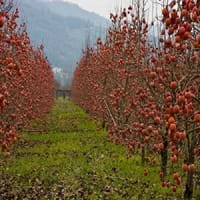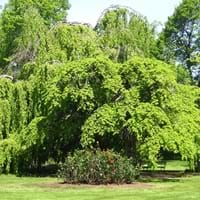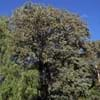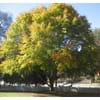Life Span
Perennial
Perennial
Types
Not available
Not Available
Habitat
secondary forest, Sunny Edge, Woodland Garden Canopy
Temperate Regions
USDA Hardiness Zone
6-10
4-7
Sunset Zone
H1, 6, 7, 8, 9, 12, 14, 15, 16, 18, 19, 20, 21, 22, 23, 24
A3, 2b, 3a, 3b, 4, 5, 6, 7, 8, 9, 14, 15, 16, 17, 18, 19, 20, 21, 22, 23, 24
Habit
Pyramidal
Oval or Rounded
Flower Color
Light Yellow
Yellow green
Flower Color Modifier
Bicolor
Bicolor
Leaf Color in Spring
Green
Lime Green, Sea Green
Leaf Color in Summer
Green
Dark Green
Leaf Color in Fall
Yellow, Burgundy, Orange Red
Gold, Copper, Bronze
Leaf Color in Winter
Not Available
Not Available
Leaf Shape
Pinnate
Elliptic and Ovate
Plant Season
Summer, Fall, Winter
Spring, Summer, Fall
Sunlight
Full Sun, Partial Sun
Full Sun, Partial Sun
Type of Soil
Clay, Loam
Loam
The pH of Soil
Acidic, Neutral
Acidic, Neutral
Soil Drainage
Well drained
Well drained
Bloom Time
Summer
Early Spring, Spring
Tolerances
Not Available
Drought
Where to Plant?
Ground
Ground
How to Plant?
Grafting, root cutting, Seedlings
Transplanting
Plant Maintenance
Medium
Medium
Watering Requirements
Requires regular watering
Average Water Needs
In Summer
Lots of watering
Lots of watering
In Spring
Moderate
Moderate
In Winter
Average Water
Average Water
Soil pH
Acidic, Neutral
Acidic, Neutral
Soil Type
Clay, Loam
Loam
Soil Drainage Capacity
Well drained
Well drained
Sun Exposure
Full Sun, Partial Sun
Full Sun, Partial Sun
Pruning
Remove damaged leaves, Remove dead branches, Remove dead leaves
Remove damaged leaves, Remove dead branches, Remove dead leaves
Fertilizers
All-Purpose Liquid Fertilizer
All-Purpose Liquid Fertilizer
Pests and Diseases
Caterpillars
Beech tarcrust
Plant Tolerance
Drought
Drought
Flowers
Insignificant
Insignificant
Flower Petal Number
Single
Single
Foliage Texture
Medium
Medium
Foliage Sheen
Glossy
Glossy
Self-Sowing
Not Available
No
Allergy
Abdominal pain, Anaphylaxis, Inflammation
Mildly Toxic
Aesthetic Uses
Not Used For Aesthetic Purpose
Not Available
Beauty Benefits
Not Available
Not Available
Environmental Uses
Air purification
Air purification
Medicinal Uses
Astringent, Cancer, Diarrhea
No Medicinal Use
Part of Plant Used
Bark, Fruits, Wood
Bark, Tree trunks
Other Uses
Used as a cereal in making bread, porridge, Used As Food, Used for flavoring in Liquors, dairy products, gelatins,puddings, meats, candies, etc.
Making chairs to parquetry (flooring) and staircases
Used As Indoor Plant
No
No
Used As Outdoor Plant
Yes
Yes
Garden Design
Feature Plant, Fruit / Fruit Tree, Topiary / Bonsai / Espalier
Feature Plant, Shade Trees
Botanical Name
Diospyros virginiana
Fagus sylvatica
Common Name
American persimmon common persimmon, sugar-plum,eastern persimmon
Copper Beech, European Beech, Purple Beech
In Hindi
अमेरिकी ख़ुरमा
Copper Beech
In German
amerikanische persimmon
Copper Beech
In French
Diospyros virginiana
Hêtre pourpre
In Spanish
Diospyros virginiana
Copper Beech
In Greek
American λωτός
Copper Beech
In Portuguese
Caqui americano
Copper Beech
In Polish
Amerykański persimmon
Czerwony buk
In Latin
Diospyros virginiana
Copper Beech
Phylum
Tracheophyta
Magnoliophyta
Class
Magnoliopsida
Magnoliopsida
Family
Ebenaceae
Fagaceae
Clade
Angiosperms, Asterids, Eudicots
Angiosperms, Eudicots, Rosids
Tribe
Not Available
Not Available
Subfamily
Not Available
Not Available
Number of Species
Not Available
Importance of American persimmon and Copper Beech
Want to have the most appropriate plant for your garden? You might want to know the importance of American persimmon and Copper Beech. Basically, these two plants vary in many aspects. Compare American persimmon and Copper Beech as they differ in many characteristics such as their life, care, benefits, facts, etc. Every gardener must at least have the slightest clue about the plants he wants to plant in his garden. Compare their benefits, which differ in many ways like facts and uses. The medicinal use of American persimmon is Astringent, Cancer and Diarrhea whereas of Copper Beech is No Medicinal Use. American persimmon has beauty benefits as follows: Not Available while Copper Beech has beauty benefits as follows: Not Available.
Compare Facts of American persimmon vs Copper Beech
How to choose the best garden plant for your garden depending upon its facts? Here garden plant comparison will help you to solve this query. Compare the facts of American persimmon vs Copper Beech and know which one to choose. As garden plants have benefits and other uses, allergy is also a major drawback of plants for some people. Allergic reactions of American persimmon are Abdominal pain, Anaphylaxis and Inflammation whereas of Copper Beech have Mildly Toxic respectively. Having a fruit bearing plant in your garden can be a plus point of your garden. American persimmon has showy fruits and Copper Beech has no showy fruits. Also American persimmon is not flowering and Copper Beech is not flowering . You can compare American persimmon and Copper Beech facts and facts of other plants too.





